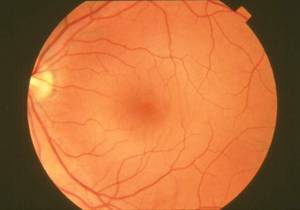Visionary scientists grow retina in a dish - In a landmark breakthrough in developmental biology, scientists in Japan have succeeded in growing a retina in a dish.
The research, published in the journal Nature by Mototsugu Eiraku and his colleagues at the RIKEN Centre for Developmental Biology in Kobe, marks a step change for the field of regenerative medicine.
Where previously scientists had shown that it was feasible to persuade stem cells to turn themselves into a limited subset of retinal components, nobody had quite expected that it would be possible to grow a whole retina just yet. The key to the breakthrough appears to be the way that the team set up their experiments.
 They used mouse embryonic stem (ES) cells, which were grown in a three dimensional culture system that included components called extracellular matrix materials. This triggered some of the ES cells to form ball-like vesicles, which, with further nurturing, then developed an invagination on one side that sank into the ball, producing a cup-shaped structure strongly resembling the developing eyeball see in an embryo.
They used mouse embryonic stem (ES) cells, which were grown in a three dimensional culture system that included components called extracellular matrix materials. This triggered some of the ES cells to form ball-like vesicles, which, with further nurturing, then developed an invagination on one side that sank into the ball, producing a cup-shaped structure strongly resembling the developing eyeball see in an embryo.
Within this structure and after about nine days total in culture, the cells of the mature retina then began to appear, including the pigmented epithelial cells that form the supprting layer at the back of the eye; this was followed by the formation of rod and cone photoreceptors, the specialised cells that turn light waves into nerve signals.
It should be emphasised that this process all occurred spontaneously, without further manipulation on the part of the researchers, meaning that, at the moment, the molecular signals driving this process aren't known. But this feat has established a system that will now enable scientists to study the development of the retina.
Perhaps more importantly, it also means that the possibility of re-growing a retina to replace one destroyed by disease or trauma has come one important step closer.
- Previous Brain shape shows who you'll vote for
- Next Flappy wind turbines









Comments
Add a comment